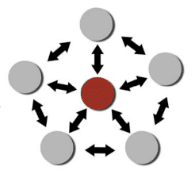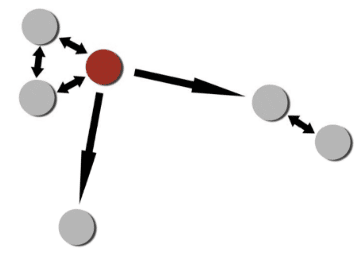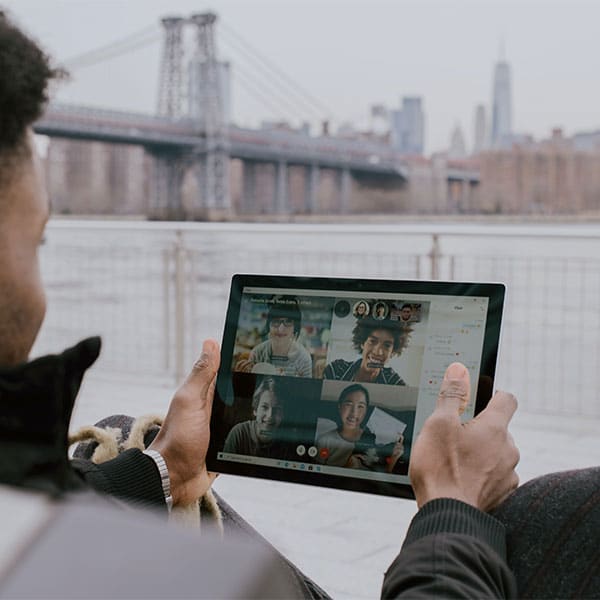The Future of Work: Connecting a Remote Team
Strategies for Managers and Executives to Keep Their Employees Engaged
Article Summary:
It can be hard to determine your company’s next steps. Finding the balance between back-to-the-office and work-from-home is tough. In this article, business consultant Beth Nordaune discusses how corporate leadership can make a plan and keep employees during a constantly fluctuating business climate.
Article Contents:
The Future of Work
The Problems with Remote Work
Effects on the Workplace
Energy
Individualization
Future Orientation
Solutions for Remote Work
Connecting Your Team
Managing Your Team
Summary
The Future of Work
With about 78% of employees stating that they enjoy working from home, many companies will undoubtedly shift their work structure to appease their teams.
While the US Bureau of Labor and Statistics Economic Report indicated that people are returning to the office, many are still teleworking. In October, 11.6% percent were reported to be working remotely, which was down from September’s 13.2%.
A Forbes article also outlined the larger corporate structural trend toward flatter organizations and more contracted and work-from-home employees.
So what does this mean for the corporate workplace? Is the collaborative team as we knew it a thing of the past?
The Problems with Remote Work
Many employees were initially excited to work from home. But in my coaching, I am seeing a new narrative unfold. People are beginning to feel disconnected from and unsure of the company’s future. There is frustration around creative and collaborative projects because of the challenge to work with others without being in the same space. I hear struggles around training and getting new team members to work through problems without being in the same place. Managers and teams are having a difficult time assessing where the breakdown is when they can’t see it in person.
In his book, The Culture Code: The Secrets of Highly Successful Groups, Daniel Coyle identifies that in order to create a connected, safe culture, team members’ behaviors need to possess three basic characteristics:
- Energy
- Individualization
- Future Orientation
These behavior qualities are difficult to convey or mimic in a completely digital workplace.
Effects on the Workplace
According to Coyle, belonging cues are “simple, short signals that create a sense of connection and future. They show care, commitment, and create a strong, deep connection.” This is where I’m seeing a large breakdown in companies’ cultures.
Previously, these belonging cues were easily conveyed. It included doing many things that come naturally in interpersonal communication:
- Eye contact
- Body language
- Attentiveness
- Proximity
- Tone of voice
- Energy
- Turn taking
- Mimicry
- Inclusion and involvement
These subtle signals all contribute to whether people feel safe and comfortable in a group. They also help a person feel like relationships have a future.
Since these cues act on mostly a subconscious level, it’s been difficult to identify their absence, but I have noticed in my clients that a lot of their work-from-home struggles can be traced back to the lack of belonging cues.
Energy
Energy exchange is one of the elements of a successful business that we know can’t be replicated online. We can see others and hear others but we are missing out on the exchange of energy.
When a team first forms, energy mostly comes from the leader to each member. As the team grows and develops, energy will flow from member to member. A strong team is identified by the way all that energy can in time return back to the leader. This can be summed up in the graphic below:


This organic energy can be felt when working together on projects, in the shared time margins between working, when new plans are implemented, and from shared experiences. Without these shared experiences, energy is lost.
Unequal inputs of energy cause some team members to feel included, and others to feel like outsiders. This leads to an imbalance in team energy, which can drain team members and leaders. A completely digital workplace has led to this being the default setting of company culture. The extra effort it takes to nurture work relationships is often neglected when remote working, resulting in an entire team feeling isolated and disconnected to some degree. The graphic below is an example of what this unequal distribution of energy can look like within a company:


This loss of energy manifests as low motivation. A direct result of low motivation is the feelings of disconnectedness that cause a person to leave and try another company hoping for fulfillment or engagement.
Individualization
Many opportunities to feel unique and valued happen in the small exchanges we would have in-person at the office. This occurs in between meetings or when sharing about our days. It was mostly seen in individual relationship building in the “in-between” spaces at work.
In order to limit our time in online meetings, we meet collectively. This pursuit of digital efficiency has caused a loss of individuality. There is no space left before or after online meetings for socialization. One-on-one interactions are rare online for the sake of productivity. Consequently, team members no longer feel valued as unique individuals.
Future Orientation
A sense of long-term belonging was usually indicated by an employee’s relationship with superiors in the company. While this is still true, moving to remote work has caused a future orientation to also be determined by an individual’s relationship with the company as a whole.
Complexity and uncertainty cloud workers’ career outlooks. As the economy leads companies to question how they will move forward, companies are causing this same questioning in their employees. Without a stable, secure future orientation, trust is lost between a company and its employees. Employees – who should ideally be a company’s main brand ambassadors – will feel unsettled and be more likely to look elsewhere for employment.
Solutions for Remote Work
So, what kind of shift will working from home cause? How will we replace in-person connections? Or will we have to continue what has been imperative to humans for thousands of years and find a way to be in the same place? How will you continue to meet with your people individually?
Connecting Your Team
The culture of a company is a huge part of what determines the success of the company. Interpersonal connections are what weave together a strong company culture and result in highly motivated and effective employees. Here are a few ways you can set the tone and foster connections on your team:
- Set aside 1:1 time to build strong relationships throughout your team.
- Leave time for conversations. If your company is mostly digital now, make sure to structure meetings to allow for unstructured talk.
- Keep getting to know more about each other. Show interest in others beyond just work talk.
- Find ways to meet in person.
- Help your team set short-term goals, and then support each other in achieving these.
- Give frequent and open updates on the company. Set a precedent of transparency and care.
Managing Your Team
The added element of everyone working remotely has not made the job of company management and leadership any easier. As you navigate some of the new strategies of your leadership role, consider doing the following:
- Equip your people to be problem solvers. Make them confident in this role, and then trust them to do it.
- Update your training plans. New problems call for new solutions. Think innovatively about how onboarding will look in your company now.
- You may need to increase your communication and management skills as you see work exceeding or not meeting the goals. This could look like built-in weekly feedback sessions or other structured conversations.
- Have clear action plans in place for projects.
- Make sure you and your team have clarity in roles and expectations. It’s never a bad idea to pause and reestablish these together.
- Don’t forget about the phone. Sometimes it is easier to jump on a call or conference call to check in. Think about what communication channel would serve the group the best.
Summary
My biggest takeaway from hearing a new generation of workers navigate our current business landscape is the need for corporate leadership to be flexible, honest, and innovative. Trying to run things the way you always have will result in team burnout and high turnover. We have the opportunity now to glean ideas, listen to feedback, look to the future, and create a work environment that is designed to be effective, responsive, and competitive.
Now more than ever, business leaders need to be empathetic, relational, and innovative. Only then will we begin to shape the new landscape of business.

